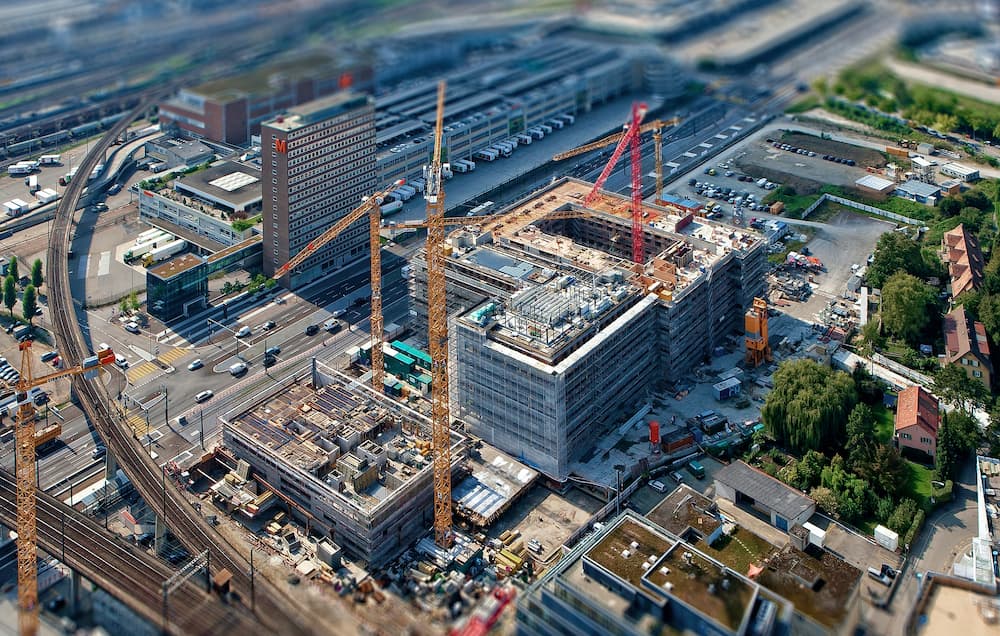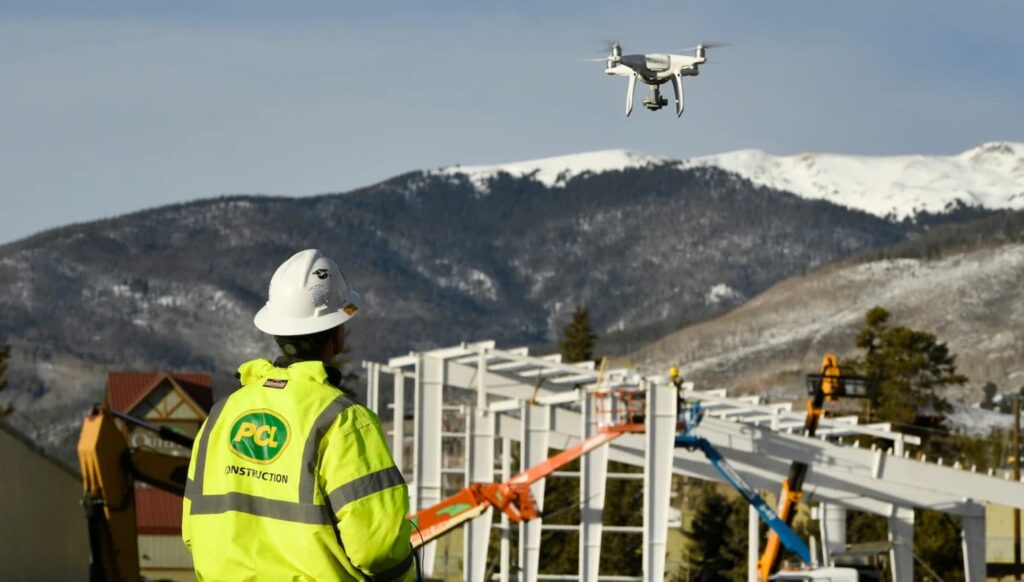In a world where technology is constantly evolving, the construction industry is no exception to the wave of innovation. Drones, once primarily associated with aerial photography and videography, are now making their mark on construction sites globally.
With their ability to quickly and accurately survey construction sites from above, drones are transforming the way builders plan and monitor projects.
The benefits of drone technology in construction are numerous.
Let’s see it in detail!
Applications of drones in construction
Drones offer a wide range of benefits to the construction industry:
- They improve safety conditions by reducing the need for workers to physically access hazardous areas. With drones, construction companies can conduct inspections of tall structures, roofs, and other hard-to-reach areas without risking the lives of their employees. This not only minimizes the chances of accidents but also ensures compliance with safety regulations, including the GDPR
- Drones enhance productivity and efficiency by significantly reducing project timelines. Traditional methods of surveying and mapping construction sites are time-consuming and labor-intensive. With drones, these tasks can be completed in a fraction of the time, To give an example, let’s take 3DR, an American company based in Berkeley, which produces enterprise drone software for construction companies. It offers numerous examples of projects that have been optimized with the help of drones. 3DR worked with the Arizona Department of Transportation and used its Site Scan app to survey a site for a bridge replacement project, reducing survey times from a full day or more to just 30 minutes .
- Drones provide construction companies with access to high-resolution imagery and 3D models of construction sites. This data can be used to create marketing purposes, detailed maps, identify potential issues and optimize project planning. By having a bird’s-eye view of the site, builders can detect and rectify problems early on, minimizing rework and costly delays. This level of data and analytics was previously unavailable, making drones a game-changer in the construction industry.

Drones in construction projects: 3 successful uses
Drones used in the construction industry are equipped with advanced technology and specialized equipment.
These drones are typically equipped with:
- High-resolution cameras: drones in construction feature advanced high-resolution cameras, capturing detailed imagery essential for project analysis and documentation.
- Thermal imaging sensors: equipped with thermal imaging sensors, drones detect heat variations, identifying issues like energy leaks or structural abnormalities crucial for safety and efficiency.
- LiDAR sensors and GPS systems: LiDAR sensors use laser beams to measure distances and create accurate 3D models, aiding in precise site planning and volume calculations. GPS systems ensure accurate navigation, aligning captured data with georeferenced site coordinates. Additionally, intelligent flight control systems enable autonomous flight, pre-programmed routes, and obstacle avoidance for comprehensive data capture.
Regulations and legal considerations for drone use in construction
While the use of drones in construction brings numerous benefits, it is important to adhere to regulations and legal considerations.
It is crucial for construction companies to stay updated with the latest regulations and ensure that their drone operations comply with the law, like the european GDPR. This includes obtaining the necessary permits and authorizations for flying drones in restricted areas or near airports. Failure to comply with these regulations can result in fines, legal complications, and potential damage to the company’s reputation.
Additionally, construction companies must consider privacy concerns when using drones. The use of drones for capturing imagery and data raises privacy issues, especially when flying near residential areas or private property. It is essential to inform and obtain consent from individuals who may be affected by drone operations, ensuring that their privacy rights are respected.
Furthermore, the faces of the workers cannot be shown in the photos, which is why it is important that the software technology is equipped with an artificial intelligence system that blurs the faces, respecting the GDPR regulations
In Italy the regulation is expressed by ENAC.
Future trends and advancements in drone technology for construction
While drones offer numerous advantages to the construction industry, there are also challenges and limitations to consider. One major challenge is the limited flight time of drones.
Another challenge is the weather conditions. It is crucial to monitor weather forecasts and plan drone flights accordingly to ensure the safety of the equipment and efficient data capture. For example, TimelapseLab cameras are resistant to adverse weather conditions.
Furthermore, the data collected by drones needs to be processed and analyzed effectively. Construction companies may need to invest in data analysis tools and training to fully leverage the benefits of drone technology.

Conclusion
The use of drones is transforming project planning, execution, and management in construction. With benefits such as improved safety, increased productivity, and cost savings, drones empower construction companies to gather precise data, make informed decisions, and achieve outstanding results. However, to fully unlock the potential of drone technology, it’s crucial to adhere to regulations, invest in training, and address challenges and limitations
Find out more about drones on construction site: contact us at info@timelapselab.it
FAQ
Drones in construction improve safety conditions, enhance productivity, provide access to high-resolution imagery and 3D models, and help detect and rectify issues early on.
Drones in construction are equipped with high-resolution cameras, thermal imaging sensors, LiDAR sensors, GPS systems, and intelligent flight control systems for autonomous flight and obstacle avoidance.
Construction companies using drones must adhere to regulations, obtain necessary permits, comply with privacy concerns, and ensure that the faces of workers are not shown in photos to respect GDPR regulations.
Limited flight time, weather conditions, and the need for effective data processing and analysis are some challenges associated with using drones in construction.
Construction companies can fully leverage the benefits of drone technology by adhering to regulations, investing in training, addressing challenges, such as limited flight time and weather conditions, and effectively processing and analyzing data collected by drones.